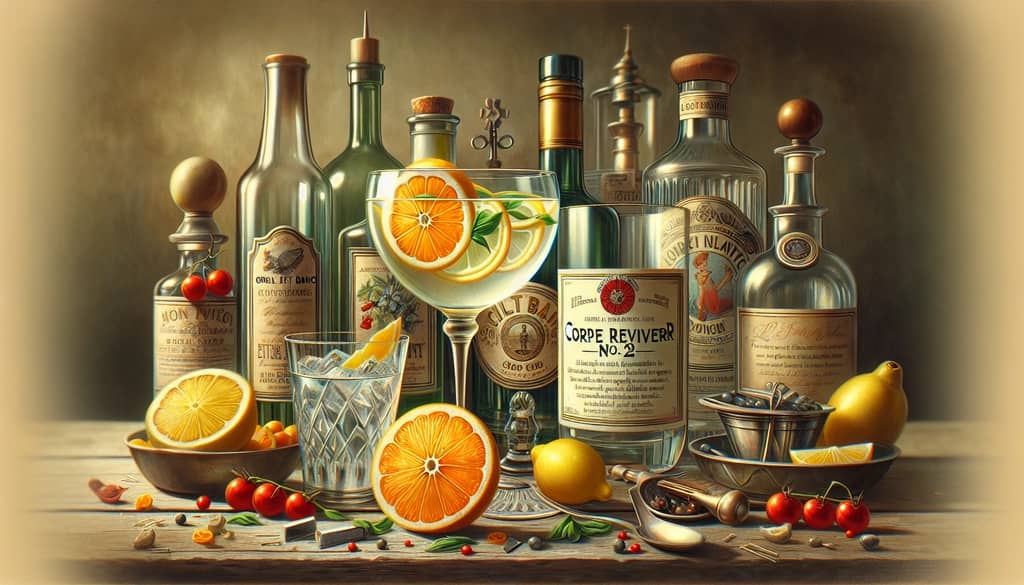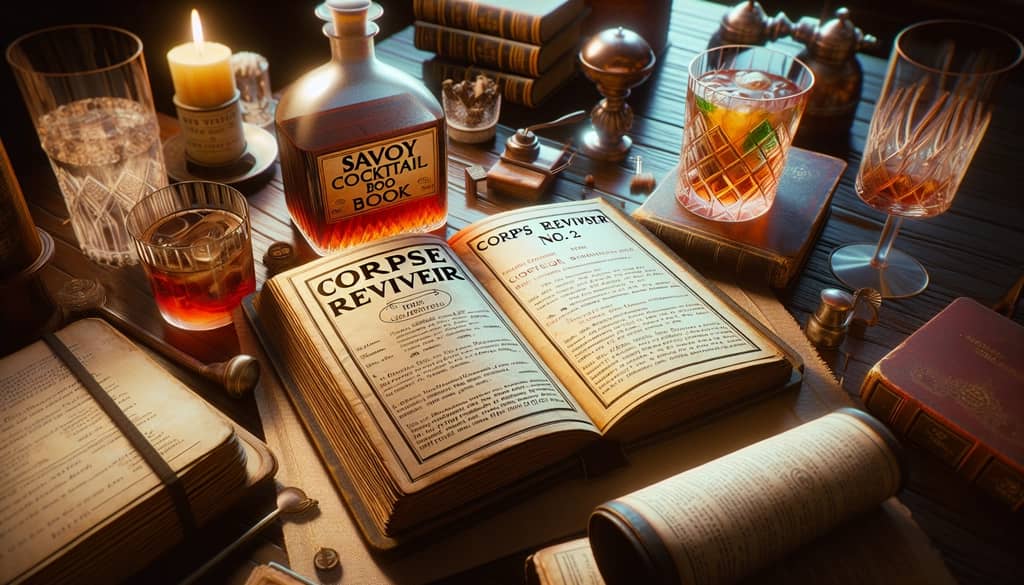Updated on: 6/3/2025
The Corpse Reviver No. 2: Uncovering Its Historical Roots

There's something undeniably bewitching about cocktails with mysterious names, and few are as evocative as the Corpse Reviver No. 2. Imagine walking into a dimly lit speakeasy, the kind that thrived during the roaring 1920s, where whispers of secrets and jazz fill the air. Among the clinking glasses and spirited conversations, a bartender skillfully crafts a cocktail known for its power to rouse even the dead—or so the legend goes. So, what's the real history behind the Corpse Reviver No. 2 cocktail, and why does it continue to allure cocktail enthusiasts and bartenders alike?
Raising Spirits: Historical Context of Corpse Reviver No. 2

The Corpse Reviver No. 2 finds its roots in a time when cocktails were crafted as morning-after elixirs—aptly named to revive one from the previous evening's indulgences. The first documented mention comes from the 1930 edition of Harry Craddock's seminal bartender's guide, The Savoy Cocktail Book. Craddock, a renowned bartender who worked at London's Savoy Hotel, lists a series of Corpse Reviver cocktails, with No. 2 standing out as a fan favorite due to its perfectly balanced flavor profile.
Craddock's inclusion of the Corpse Reviver No. 2 in his iconic book during the Prohibition era in the United States reflects a fascinating time when cocktail culture flourished despite the ban on alcohol. Speakeasies, hidden bars where people gathered clandestinely to enjoy a drink or two, became hotbeds of innovation, and bartenders were alchemists of their age, crafting concoctions that would become timeless classics.
Modern Takes & Variations: Breathing New Life into an Old Classic

While the original Corpse Reviver No. 2 is celebrated for its balance of sweet and sour with a hint of bitterness, modern mixologists have embraced inventive twists to this classic. Some variations incorporate different types of gin, from floral to herbal profiles, to add unique nuances to the traditional recipe. Others play with the citrus component, substituting lemon juice with blood orange juice for a richer color and depth.
The influence of the Corpse Reviver No. 2 is evident in today's cocktail culture, as it's often featured on upscale bar menus around the world. Whether it's a craft cocktail bar in Brooklyn or a historic lounge in Paris, the drink epitomizes the blend of historical reverence and contemporary flair that defines modern mixology.
Crafting the Classic: The Corpse Reviver No. 2 Recipe
- 30 ml: gin
- 30 ml: Cointreau
- 30 ml: Lillet Blanc
- 30 ml: freshly squeezed lemon juice
- A dash of: absinthe (or a rinse)
- Garnish: Lemon twist
Preparation:
- Rinse a chilled coupe glass with a dash of absinthe, swirling to coat the interior before discarding the excess.
- Combine gin, Cointreau, Lillet Blanc, and lemon juice in a cocktail shaker with ice.
- Shake vigorously until well-chilled and strain into the prepared coupe glass.
- Garnish with a lemon twist for a touch of elegance.
The Enduring Appeal: A Toast to History
The Corpse Reviver No. 2 remains a cocktail of contradictions, capable not only of reviving spirits but also evoking nostalgia and intrigue. Whether you're a historian at heart or a cocktail enthusiast eager to expand your repertoire, the allure of the Corpse Reviver No. 2 is undeniable. Why not raise a glass to past sophistication and craft this storied drink yourself? You might just feel transported to another era—revived, renewed, and ready to take on the world, one sip at a time.